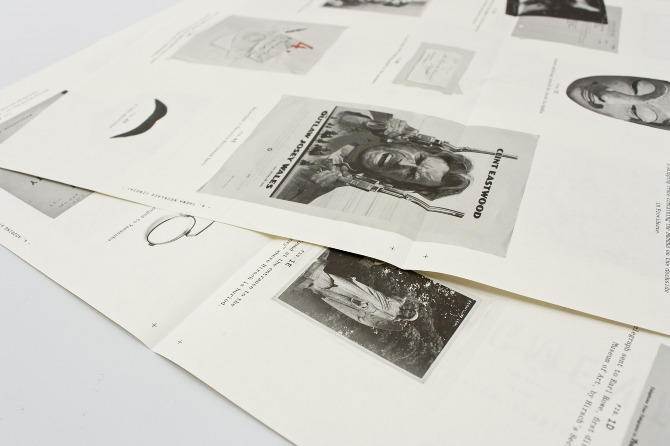Sitings is an annual juried competition of site-specific installations created in the RISD Museum by RISD degree candidates. In 2012, juror Nancy Chunn selected the project Fragments, an audio tour and printed guide illustrating episodes from the lives of seven objects from the Museum’s galleries. These objects included a fragment of an Amenhotep I Egyptian wall relief, a neo-Babylonian cuneiform tablet, the Dainichi Nyorai Buddha, a 19th-century Rajput pendant, a fragment of a Northern Qi dynasty cave temple, the Abby Aldrich Memorial Room, and an early 20th-century initiation mask from the Yaka people of the present-day Democratic Republic of the Congo. Fragments was developed by Anya Ventura and Anther Kiley, and was on view at the RISD Museum from February 24 - June 3, 2012.
The Sitings competition is about celebrating the Museum’s collections and involving the public in new ways. We began our work on Fragments with questions: How do we know what we know about non-Western objects? What ways of knowing are privileged in our society, and how does the institution of the museum validate these? Many of the objects in the Museum’s galleries have had very long lives, and only a fraction of these lives are captured on the labels. Much of their history is completely unknown. And while the meaning of an object is far from static or stable, the label text often only conveys the object’s original ethnographic use, its significance at the time of creation. Our goal was to speculate about what other moments in the objects’ lives might have been like, over time and place.

In deciding what kinds of stories to tell, we focused primarily on economic and social histories—the histories of collecting, travel, trade, and conflict that preceded its accession into the Museum. For example, rather than interpreting the Dainichi Nyorai Buddha as a symbol of a monolithic “Japaneseness,” we wanted to show how this sculpture defied conventional borders, and was embedded in a changing, complex network of people, things, and ideas. We wanted to imagine other objects at the crux of modernity, ensnared in the grand ambitions of nation-building, used to differentiate between “us” and “them,” reinforcing relations of power and authority while simultaneously being the loci of awe and fetishization.

In conceiving new contexts for these seven objects, we decided to create a kind of media “lifeworld” around them through images and sound. Long hours were spent paging through curatorial files, trawling image archives, researching obscure historical figures, and digitally reconstructing images (otherwise known as Photoshopping) to make sense of what may have transpired. Although these stories are rooted in fact, we wanted to create the conditions of doubt, counteracting the seamless authority of the Museum. We wanted to create stories that required some piecing together, in much the same way historians and archaeologists attempt to reconstruct the past—a past that is ultimately unknowable.
We explored the politics and aesthetics of decontextualization, both physical and cultural, and the result was a “fact-blendered fiction,” to borrow a phrase once applied to director Werner Herzog’s work. This use of fiction is significant when we consider how much of our knowledge of these cultures is shaped by fantastical colonial accounts, imprecise translations, and staged photographs that partly fictionalized other cultures as “exotic” or “underdeveloped.” Our work subverts the idea that photographs and written documents should be privileged over other cultural ways of knowing, such as oral histories. While the content of the audio is often strange, it is mostly based on true stories; it is the print guide’s meticulously forged official documents and photographs, which employ the graphic languages of authority, that are the most specious. Through this kind of fictionalizing, we wanted to draw attention to the ways in which our current knowledge is shaped or constructed by imperial legacies.

Ultimately, all histories, or narratives crafted to explain the world, contain traces of this fiction, the speculative impulse. What we wanted to impart to our audience was the sense of malleability, a sense of unease about where the real truth lies in a world of stories. We want to embrace the spirit of questioning, and the value of uncertainty.
A Fragment of an Amenhotep I Egyptian Wall Relief

A Neo-Babylonian Cuneiform Tablet

The Dainichi Nyorai Buddha

A 19th-century Rajput Pendant


A Fragment of a Northern Qi Dynasty Cave Temple

An Early 20th-century Initiation Mask from the Yaka People of the Present-day Congo

Sitings is funded by the Artist’s Development Fund of the Rhode Island Foundation.
